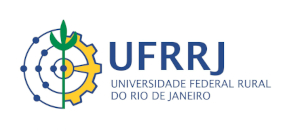Please use this identifier to cite or link to this item:
https://rima.ufrrj.br/jspui/handle/20.500.14407/19739| Tipo do documento: | TCC |
| Title: | Reintrodução e monitoramento de epífitas em áreas em processo de restauração ecológica na Mata Atlântica |
| Authors: | Pinto, Mahat Elliot Fernandes |
| : | Sansevero, Jerônimo Boelsums Barreto |
| : | Sansevero, Jerônimo Boelsums Barreto;Jacques, Eliane de Lima;Moraes, Luiz Fernando Duarte de |
| Keywords: | Enriquecimento;Forófito;Reflorestamento;Sobrevivência;Mortalidade;Floresta Tropical;Enrichment;Phorophyte;Reforestation;Survival;Mortality;Tropical Forest |
| Issue Date: | 11-Dec-2024 |
| Citation: | PINTO, Mahat Elliot Fernandes. Reintrodução e monitoramento de epífitas em áreas em processo de restauração ecológica na Mata Atlântica. 2024. 41 f. Monografia (Bacharelado em Engenharia Florestal) - Instituto de Florestas, Universidade Federal Rural do Rio de Janeiro, Seropédica, 2024. |
| Abstract: | Atualmente a restauração ecológica em florestas tropicais entende que a diversidade florística é fundamental para a evolução e manutenção dos sistemas florestais, e que ainda são encontradas dificuldades para estabelecer processos ecológicos que garantam a sobrevivência da floresta e forneçam serviços ecossistêmicos. Desafios como a chegada ou introdução de outras formas de vida têm ganhado visibilidade no cenário da restauração e as epífitas se destacam por serem um grupo altamente diverso que participam direta ou indiretamente no nicho da fauna e flora local. O presente estudo teve como objetivo preencher lacunas no enriquecimento de áreas de restauração ecológica com formas de vida epifíticas, buscando compreender a relação entre as condições fornecidas às espécies de epífitas e sua fixação e sobrevivência. Para estudar o comportamento das epífitas reintroduzidas, o experimento testou três espécies de forófitos com características de casca diferentes, localizados em duas áreas de restauração florestal, uma delas com vinte e três anos na Reserva Biológica Poço das Antas e outra com sete anos de plantio no Parque Ecológico Mico Leão Dourado em Silva Jardim – RJ. Para isso, foram reintroduzidas mudas de duas espécies do gênero Cattleya (ORCHIDACEAE) e Rhipsalis teres (CACTACEAE) em 60 forófitos em cada área de plantio. As espécies arbóreas que receberam as mudas foram Guarea guidonea (MELIACEAE), Inga edulis (FABACEAE) e Citharexylum myrianthum (VERBENACEAE). Após um ano de monitoramento os resultados demonstraram que houve diferenças estatísticas significativas entre as áreas. Para os dois grupos testados, o melhor desempenho foi observado no sítio com sete anos de idade de plantio, onde a sobrevivência observada foi justificada pela maior incidência solar proveniente do ambiente de reintrodução. Da mesma maneira, a mortalidade observada no sítio de vinte e três anos foi justificada pela baixa incidência solar no ambiente de reintrodução. Com os resultados apresentados é possível recomendar a reintrodução das Cattleya e Rhipsalis teres em projetos de restauração florestal, com idade iguai ou superior a sete anos, estimando-se obter taxas de sobrevivência de pelo menos 90%. |
| Abstract: | Currently, ecological restoration in tropical forests understands that floristic diversity is fundamental for the evolution and maintenance of forest systems, and that difficulties are still encountered in establishing ecological processes that guarantee the survival of the forest and provide ecosystem services. Challenges such as the arrival or introduction of other life forms have gained visibility in the restoration scenario, and epiphytes stand out for being a highly diverse group that participates directly or indirectly in the niche of local fauna and flora. The present study aimed to fill gaps in the enrichment of ecological restoration areas with epiphytic life forms, seeking to understand the relationship between the conditions provided to epiphyte species and their fixation and survival. To study the behavior of reintroduced epiphytes, the experiment tested three species of phorophytes with different bark characteristics, located in two forest restoration areas, one of them twenty-three years old in the Poço das Antas Biological Reserve and the other seven years old in the Mico Leão Dourado Ecological Park in Silva Jardim - RJ. For this purpose, seedlings of two species of the genus Cattleya (ORCHIDACEAE) and Rhipsalis teres (CACTACEAE) were reintroduced into 60 phorophytes in each planting area. The tree species that received the seedlings were Guarea guidonea (MELIACEAE), Inga edulis (FABACEAE) and Citharexylum myrianthum (VERBENACEAE). After one year of monitoring, the results showed that there were significant statistical differences between the areas. For both groups tested, the best performance was observed in the site with seven years of planting age, where the observed survival was justified by the greater solar incidence from the reintroduction environment. Likewise, the mortality observed in the site with twenty-three years of planting was justified by the low solar incidence in the reintroduction environment. With the results presented, it is possible to recommend the reintroduction of Cattleya and Rhipsalis teres in forest restoration projects, with an age equal to or greater than seven years, with an estimated survival rate of at least 90%. |
| URI: | https://rima.ufrrj.br/jspui/handle/20.500.14407/19739 |
| Appears in Collections: | TCC - Engenharia Florestal |
Se for cadastrado no RIMA, poderá receber informações por email.
Se ainda não tem uma conta, cadastre-se aqui!
Files in This Item:
| File | Description | Size | Format | |
|---|---|---|---|---|
| Mahat Elliot Fernandes Pinto.pdf | 6.11 MB | Adobe PDF |  View/Open |
Items in DSpace are protected by copyright, with all rights reserved, unless otherwise indicated.

